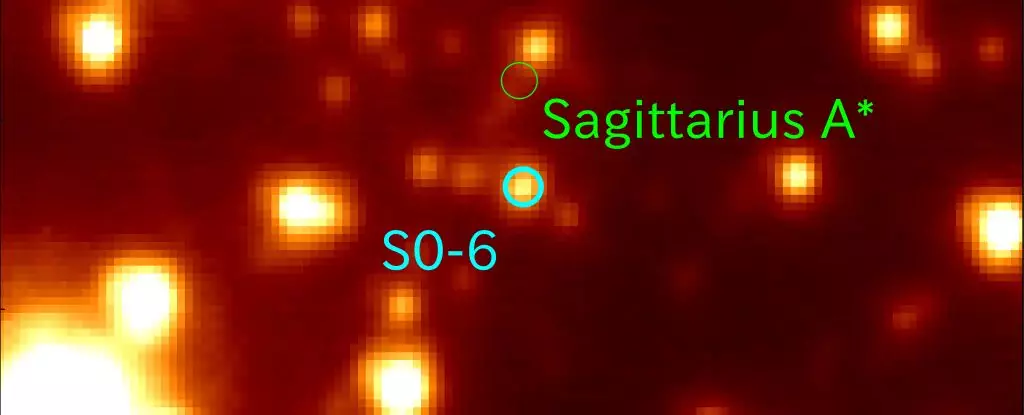The galactic center of the Milky Way harbors a captivating set of stars known as the S-stars, whose existence has perplexed astronomers for years. The enigma surrounding these celestial bodies primarily stems from their improbable origins, as the tumultuous environment surrounding a supermassive black hole is considered unsuitable for star formation. However, a recent study, led by astrophysicist Shogo Nishiyama of Miyagi University of Education, has shed light on the origin story of one of these stars, known as S0-6, revealing that it hails from beyond the Milky Way itself. This groundbreaking discovery marks the first observational evidence of a star in the galactic center with an extragalactic background.
The S-stars have captivated scientists due to their mesmerizing elliptical orbits around Sagittarius A*, the supermassive black hole at the center of our galaxy. These stars achieve mind-boggling speeds, with the fastest S-star reaching velocities of up to 24,000 kilometers (15,000 miles) per second as it swoops around the black hole. Additionally, an S-star played a crucial role in verifying Einstein’s theory of general relativity on an incredibly large scale. Consequently, these stars have become objects of immense interest in unraveling the intricacies of physics.
To decipher the mysterious origins of the S-stars, Nishiyama and his team embarked on an eight-year study of S0-6, utilizing the Subaru Telescope in Hawaii. The researchers initially focused on measuring the star’s velocity and trajectory, confirming its orbit around Sagittarius A*. Remarkably, S0-6 resides a mere 0.04 light-years from the black hole, bringing it remarkably close to the cosmic behemoth.
The team then conducted an in-depth analysis of the spectrum of light emitted by S0-6, meticulously searching for specific patterns of brighter and darker lines. These spectral lines reveal the chemical composition of the star, playing a critical role in determining its age and potential birthplace. Older stars tend to contain fewer heavy elements in comparison to younger ones, providing astronomers with a tool to estimate the star’s age. Moreover, stars that originate from the same birthplace at the same time typically exhibit similar chemical profiles.
The spectrum analysis of S0-6 unveiled a scarcity of heavy elements, indicating an age of approximately 10 billion years. Curiously, the star’s chemical composition closely resembles that of stars found outside the Milky Way, particularly those within dwarf galaxies orbiting our galaxy, such as the Sagittarius Dwarf Spheroidal Galaxy and the Small Magellanic Cloud. These dwarf galaxies are currently being slowly consumed by the Milky Way, making it plausible for some of their stars to find their way into the galactic center.
Moreover, the Milky Way has a rich history of devouring other galaxies throughout its vast 13.6 billion-year existence, leaving behind remnants of these cosmic feasts. S0-6 provides the first tangible evidence that the remains of consumed galaxies could potentially migrate towards the galactic center. However, further research is essential to confirm this groundbreaking revelation. Questions surrounding S0-6’s extragalactic origin story, the possibility of its companions, and the nature of its solitary journey remain open avenues for exploration.
The quest to comprehend the S-stars and their origins has taken a momentous leap forward with the discovery of S0-6’s extragalactic background. Nishiyama and his team’s meticulous study of this fascinating star has provided an unprecedented glimpse into the mysteries of the galactic center. The implications of S0-6’s origin extend far beyond the boundaries of our own galaxy, illuminating the intricate relationship between galaxies and their cosmic neighbors.
Continued investigations into the S-stars and their complex dynamics promise to unveil further revelations about the evolution of the universe. While tantalizing discoveries have been made, the enigmatic nature of these celestial objects continues to beckon astronomers, urging them to delve deeper into the secrets concealed within the heart of the Milky Way.



Leave a Reply